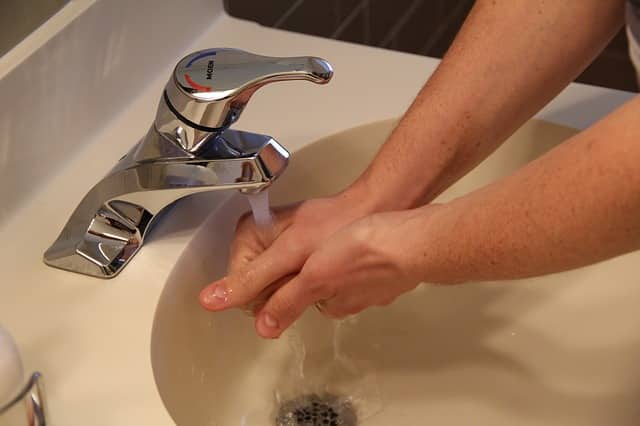
Washing your hands is among the most effective ways to protect yourself and others from spreading illness.
Still a task so seemingly simple can be tricky to explain to young children. As the global pandemic, COVID-19, makes its way across the United States, educating kids about the virus is paramount to their protection. NYU Langone pediatrician Dr. Sara Siddiqui is breaking down the steps by giving advice to parents of young children on the importance of hand washing.
The key is to make it easy and comfortable for kids, she said. This starts by leading by example. At her office, she begins and ends every visit by demonstrating proper hand washing techniques, which encourages young children to do the same.
“We always emphasize good hand hygiene throughout the year,” she said. “Let them see you wash your hands often and properly. Children learn from repetition.”
Children and adults should wash their hands multiple times a day. Siddiqui says it’s important to teach kids why and when to wash your hands like before and after eating, after using the toilet, after visiting public places, before and after using their device and explain what germs are in a simple and non-frightening manner.
“It is important to keep the focus on staying clean so we can all stay healthy,” Siddiqui said. “It is important for kids to remember this throughout their lives. Teaching them now will get them in a good habit.”
So just what is proper hand washing protocol? First, Siddiqui suggests adding a step-stool if your child can’t reach the sink as well as providing fun soaps and dispensers to make it more enjoyable. Start the process by wetting your hands with clean running water and applying soap. Lather the front and backs of your hands, between your fingers and under your nails. Scrub your hands for at least 20 seconds. Need a timer? Sing “Happy Birthday” from beginning to end, twice. “Baby Shark” is another catchy tune to guide your scrub time.

“To make it fun, use a washable marker that easily comes off to show them just how long you need to scrub those fingers,” Siddiqui said. “You want to make sure there are suds. You want to see the soap because that is when the bacteria and viruses get caught up.”
Rinse your hands well under clean water, being sure to remove all the soap. Soap and friction help lift dirt, grease and microbes—including disease-causing germs—from skin so they can then be rinsed off of hands. Rinsing the soap away also minimizes skin irritation, according to The Centers for Disease Control.
“We always have to remind the kids to wash everything off because they are in a rush,” she said. “If you don’t wash it all off, then the soap will hold the germs and it will stay on your hands.”
Once you wash off all the soap, the next step is drying. Hands need to be completely dry after being washed because bacteria and germs thrive in a moist environment. Siddiqui recommends using a paper towel to turn off the faucet and open the door when using public restrooms.
Some other steps parents can take are trimming their children’s nail short to prevent germs and bacteria from becoming trapped underneath. While soap and water is the gold standard for hand washing, hand sanitizers with 60 percent alcohol will also do the trick.
Finally, don’t forget to moisturize.
“With washing your hands and using sanitizer, especially this time of year, your hands can get really dry and crack,” she said. “You want to moisturize. It will prevent germs and bacteria from getting in the body through cuts on your hands.”


















